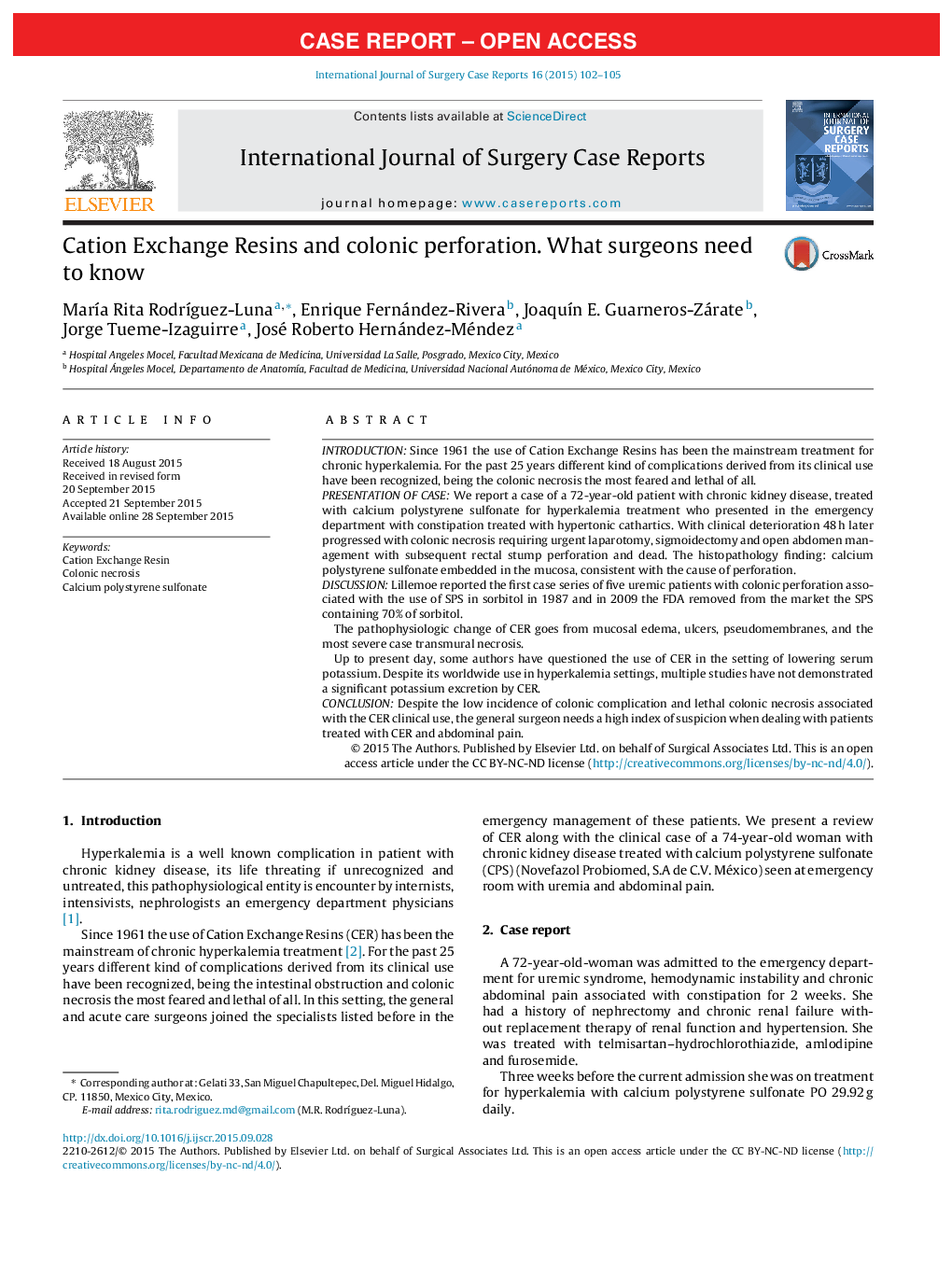| Article ID | Journal | Published Year | Pages | File Type |
|---|---|---|---|---|
| 4288637 | International Journal of Surgery Case Reports | 2015 | 4 Pages |
•Cation Exchange Resins have been the mainstream treatment for chronic hyperkalemia.•In 1987 the first case series of uremic patients with colonic perforations associated with the use of sodium polystyrene sulfonate was reported.•The pathologic damage of Cation Exchange Resin in gastrointestinal tract goes from mucosal edema, ulcers, pseudomembranes, and the most severe transmural necrosis.•Surgeons must avoid therapies with intestinal osmotic challenge implication in patients presenting gastrointestinal adverse reactions derived from Cation Exchange Resins.
IntroductionSince 1961 the use of Cation Exchange Resins has been the mainstream treatment for chronic hyperkalemia. For the past 25 years different kind of complications derived from its clinical use have been recognized, being the colonic necrosis the most feared and lethal of all.Presentation of caseWe report a case of a 72-year-old patient with chronic kidney disease, treated with calcium polystyrene sulfonate for hyperkalemia treatment who presented in the emergency department with constipation treated with hypertonic cathartics. With clinical deterioration 48 h later progressed with colonic necrosis requiring urgent laparotomy, sigmoidectomy and open abdomen management with subsequent rectal stump perforation and dead. The histopathology finding: calcium polystyrene sulfonate embedded in the mucosa, consistent with the cause of perforation.DiscussionLillemoe reported the first case series of five uremic patients with colonic perforation associated with the use of SPS in sorbitol in 1987 and in 2009 the FDA removed from the market the SPS containing 70% of sorbitol.The pathophysiologic change of CER goes from mucosal edema, ulcers, pseudomembranes, and the most severe case transmural necrosis.Up to present day, some authors have questioned the use of CER in the setting of lowering serum potassium. Despite its worldwide use in hyperkalemia settings, multiple studies have not demonstrated a significant potassium excretion by CER.ConclusionDespite the low incidence of colonic complication and lethal colonic necrosis associated with the CER clinical use, the general surgeon needs a high index of suspicion when dealing with patients treated with CER and abdominal pain.
